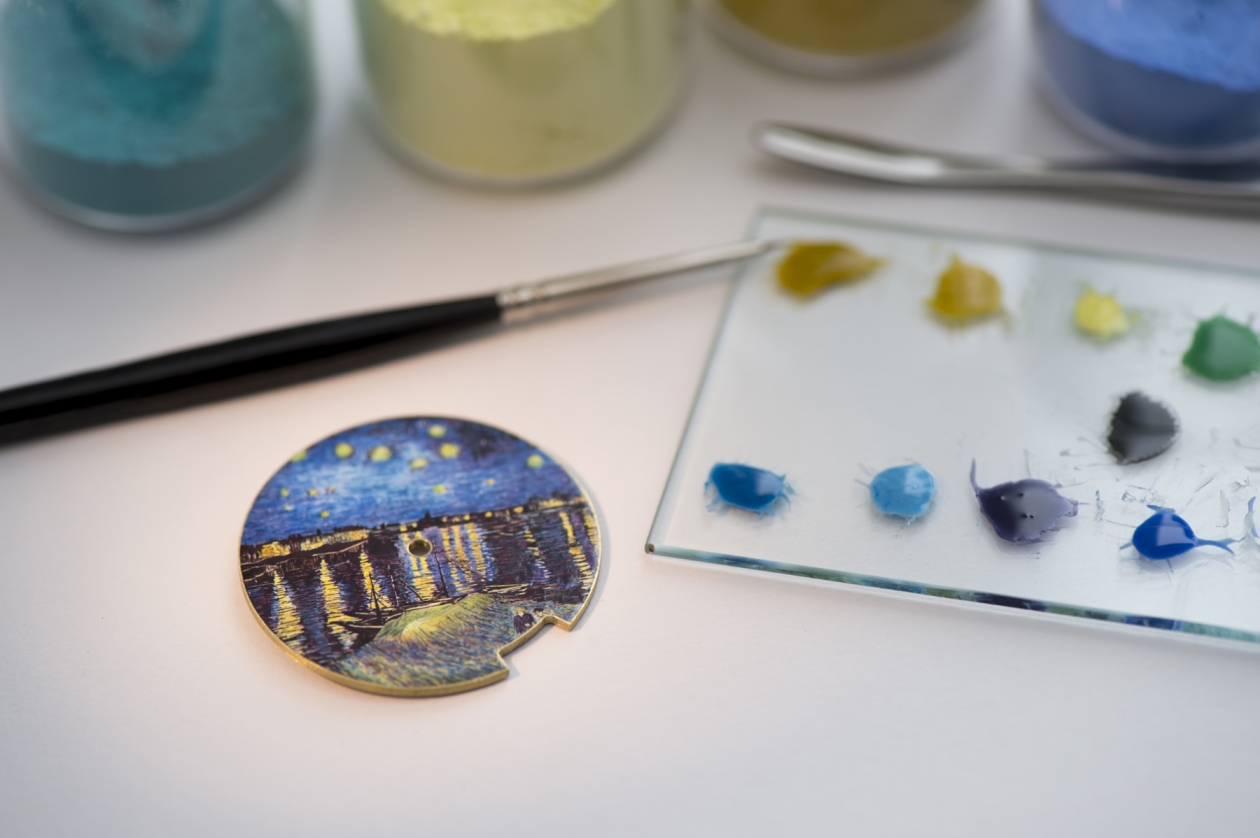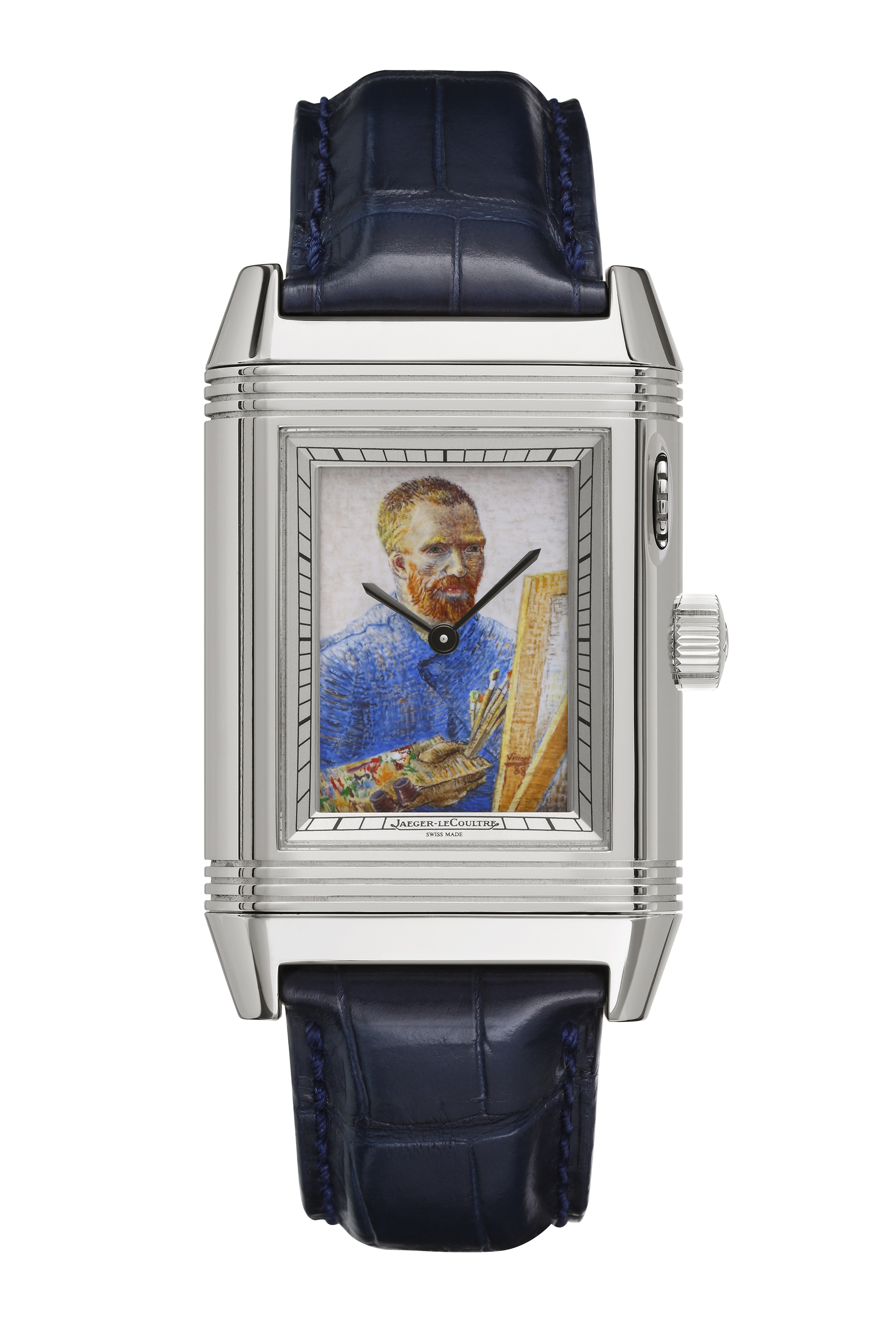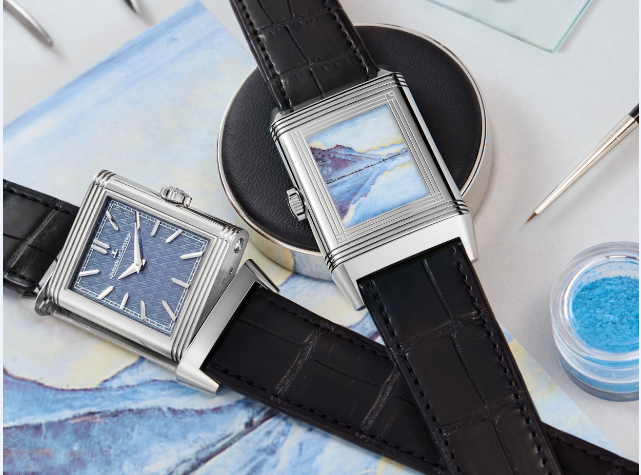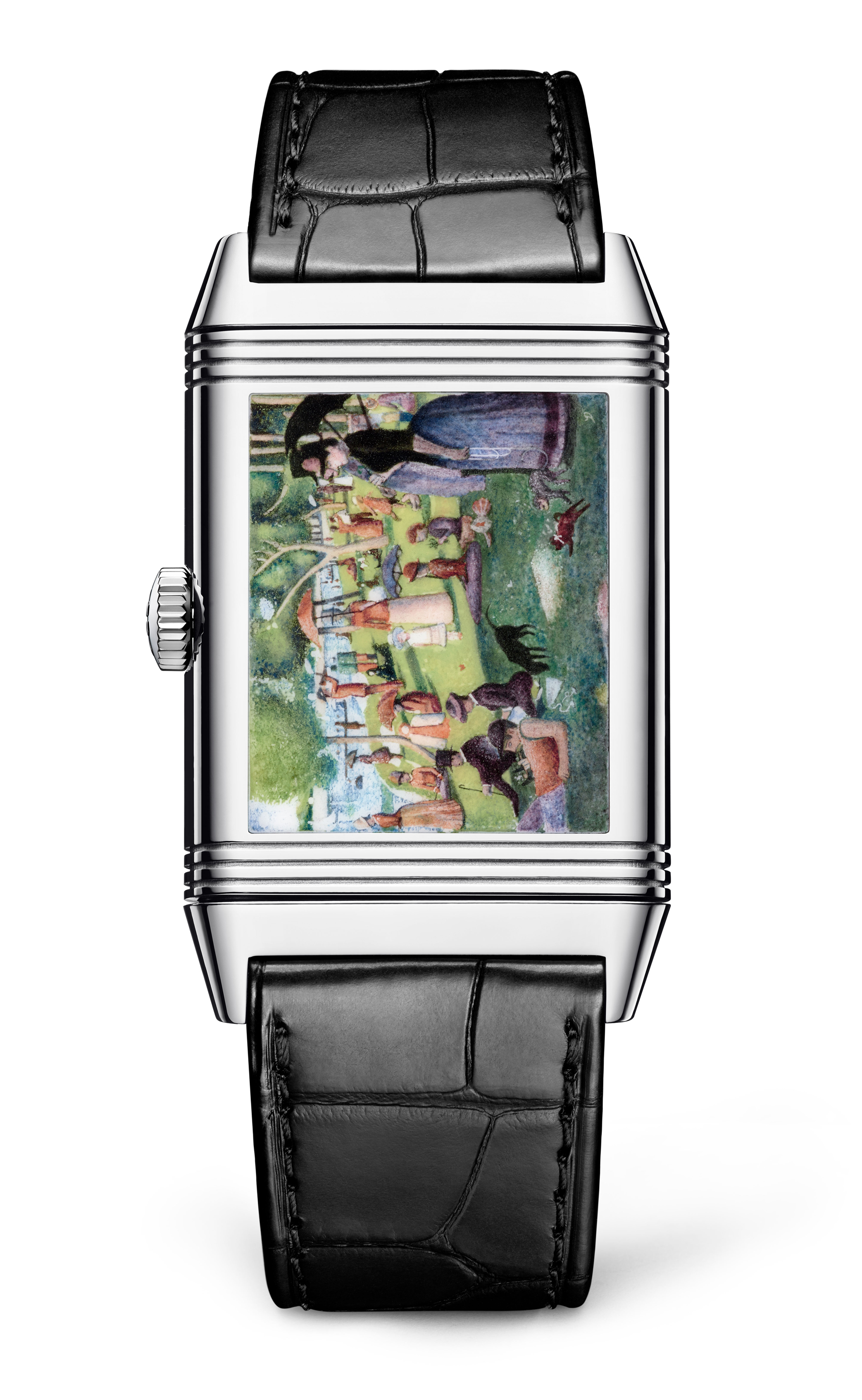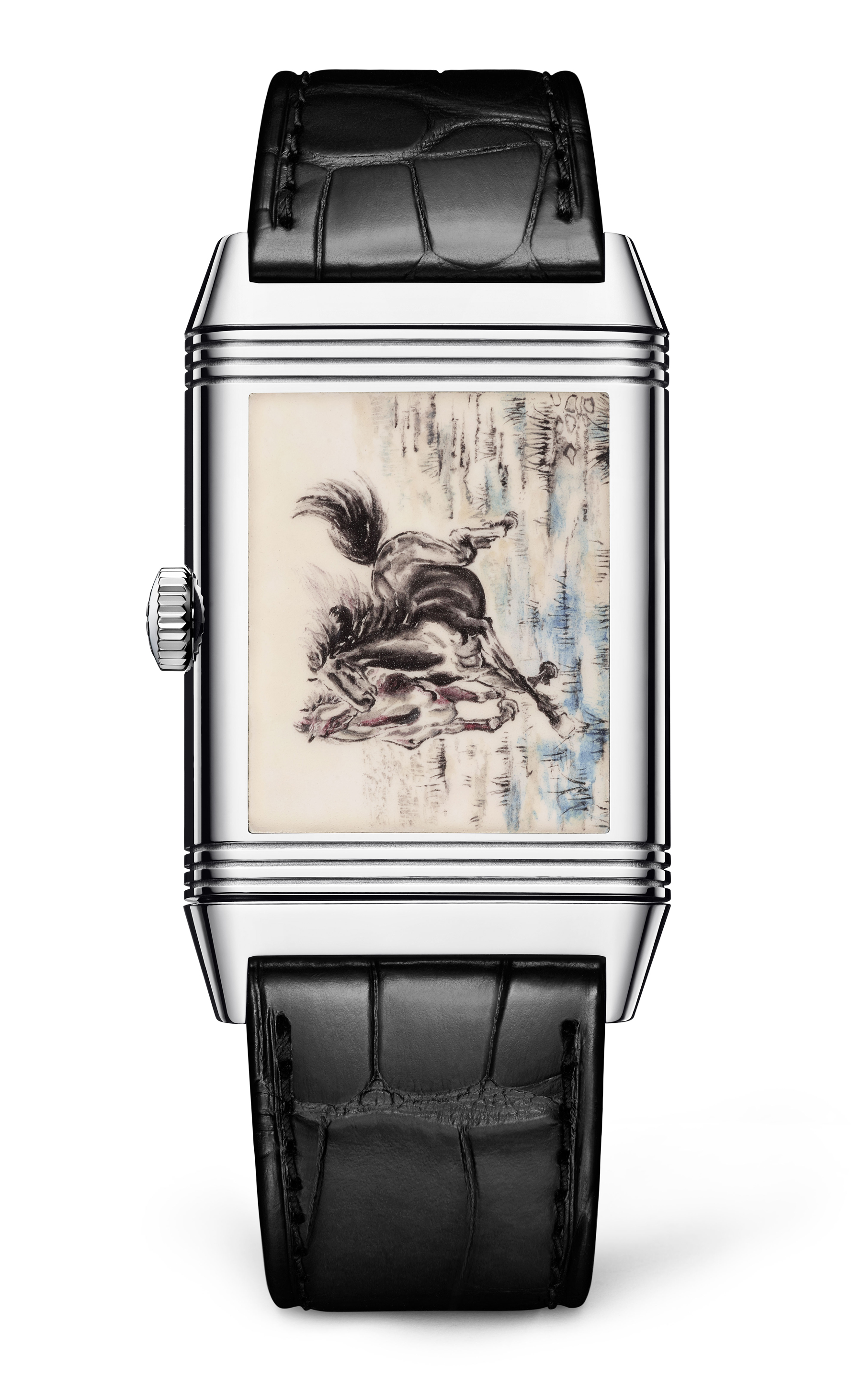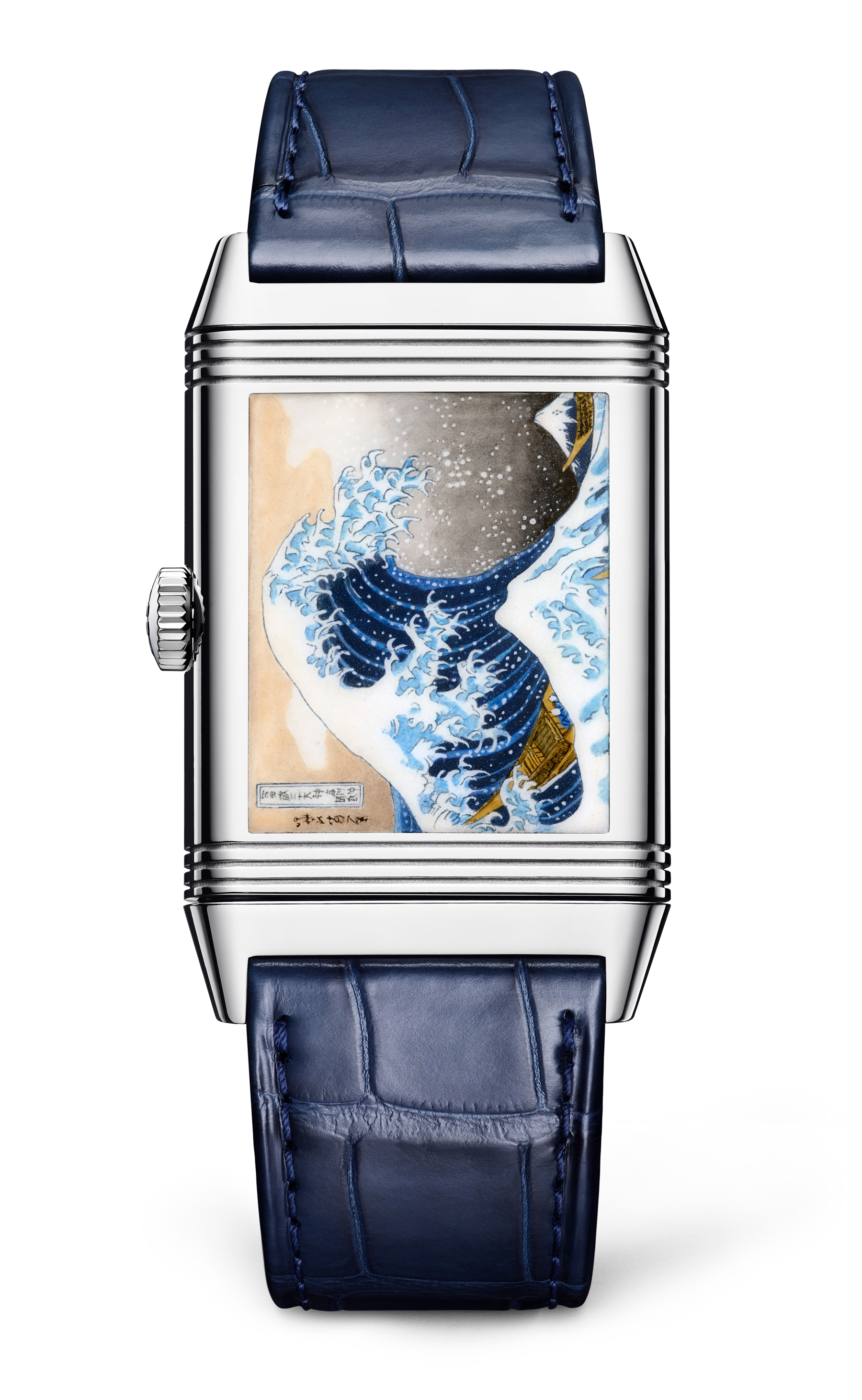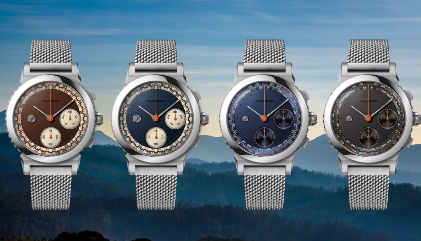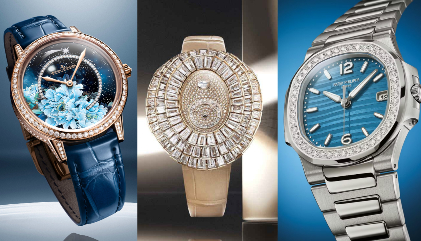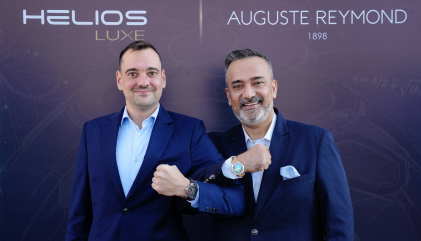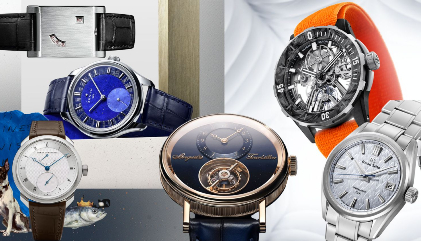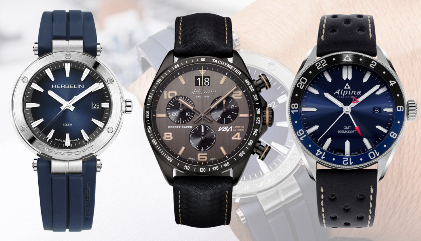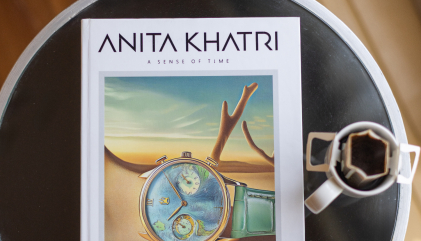Swiss luxury watch brand Jaeger-LeCoultre first introduced their iconic Reverso design in the year 1931. The timepiece was born as a utilitarian solution to a problem which started in India, when the subcontinent was still under the British colonial rule. First envisioned by a brand associate of LeCoultre, César de Trey, the Reverso was designed to solve one of the biggest problems faced by the polo players: to save the glass cover of their watch dials. It was then that Trey engaged the services of the third-generation corporate chief Jacques-David LeCoultre to create one of the industry’s first true “sports” watches – a wristwatch with a rotating case.
Today, the rectangular wristwatch is one of the most sough-after timepieces by collectors worldwide. Jaeger-LeCoultre also introduced their Art Deco techniques to the Reverso to unveil an equally aesthetic and appealing range of watches.
The 19th and 20th centuries were also privy to the boom in the world of art. With painters like Van Gogh, Ferdinand Hodler, Katsushika Hokusai amongst many others, revolutionising the world with their stunning paintings, Jaeger-LeCoultre took it upon themselves to commemorate these artists with limited edition Reverso Tribute Enamel timepieces. These pieces display some renowned artists and their paintings on the dial of the Reverso, using the traditional technique of enamelling. We've collated some of these pieces for you, along with descriptions of the art techniques which were originally introduced and used by the painters.
Van Gogh
The Dutch, post-impressionist painter of the highly influenced 20th century art, is best known for his 'Self-portrait as a painter' (1887-88), Irises, Sunflowers, and The Starry Night. Jaeger-LeCoultre paid tribute to the artist with an enameled miniature of the Selfportrait as a painter (1887-88) on the dial.
Ferdinand Hodler
One of the best known Swiss-painters of the 19th century, Hodler adopted a personal form of symbolism which he called 'parallelism'. He is best known for portraits, landscapes, and genre paintings in a realistic style. Jaeger-LeCoultre honoured the artist with a series of three Reverso watches – each one displaying a miniature reproduction of his paintings using the traditional techniques of engraving and enamelling. The three models, available in a limited edition of eight pieces each, were revealed to honour the 100th death anniversary of the artist. Jaeger-LeCoultre used the traditional Art Deco technique of guillochage for the front, using a century-old machine in order to give the dial the illusion of having been weaved. This engraving is then covered in a translucent enamel matching the tone of the painting made on the other side.
The first watch depicts the Lake Geneva with the Montblanc in the morning light, 1918 painting.
The second timepiece displays the Lake Thun with symmetric reflections before sunrise, 1904 painting.
Finally, the last watch showcases the Lake Thun, symmetric reflection, 1909, which beautifully depicts the mirror effect with the reflection of the Alps on the surface of the water.
Moving forward, Jaeger-LeCoultre also introduced three more timepieces celebrating three different artists who are known for their personal, peculiar art techniques. These techniques are, pointillism, ink wash painting, and Japanese woodblock painting. Jaeger-LeCoultre introduced these techniques on the Reverso Tribute Enamel timepieces, available in a limited edition of eight pieces each.
Georges Seurat
The pointillism technique was first coined by French post-impressionist painter and draftsman of the 19th century art world, Georges Seurat. The technique consists of juxtaposing minuscule dots of colour instead of using large brush strokes to fill the canvas. This is done to allow the spectators eye to naturally mix the colours.
Xu Beihong
The first Chinese painter to articulate the need for artistic expressions, reflecting the expressions of modern China through his art, Xu Beihong was commemorated with a Reverso Tribute Enamel seeking inspiration from his knack for ink wash painting. The watch beautifully captures the sense of movement, fluidity, and lightness conveyed by the ink wash painting of the horse – the representation of which made Beihong one of the most famous painters from China.
Katsushika Hokusai
The Japanese ukiyo-e painter and printmaker of the Edo period, is well-known as the author of the woodblock paint series, 'Thirty six views of Mount Fuji' which also included the iconic painting, 'The Great Wave'. This tribute captures the Japanese woodblock painting technique on the dial of the Reverso Tribute Enamel.





